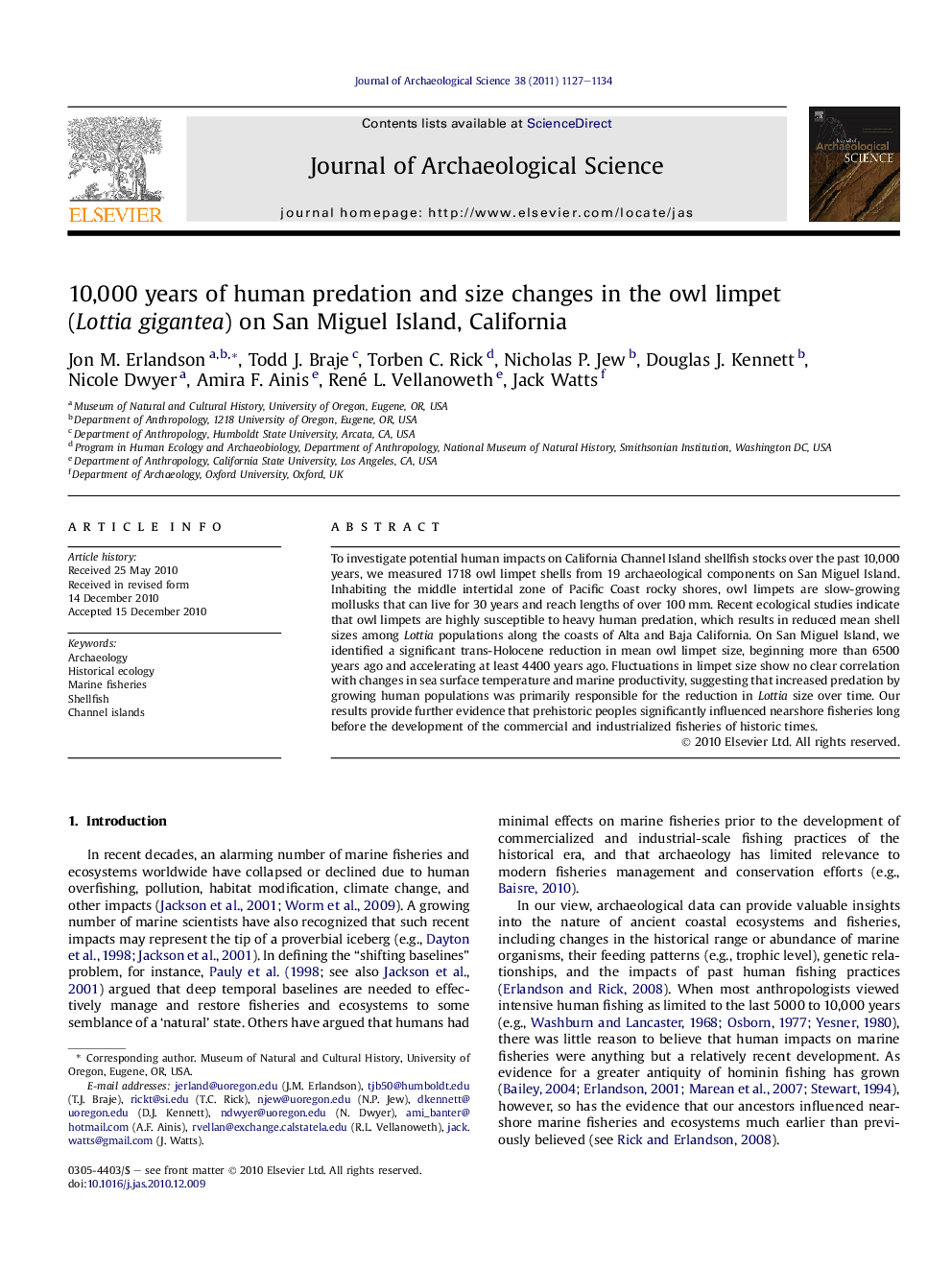| Article ID | Journal | Published Year | Pages | File Type |
|---|---|---|---|---|
| 1036067 | Journal of Archaeological Science | 2011 | 8 Pages |
To investigate potential human impacts on California Channel Island shellfish stocks over the past 10,000 years, we measured 1718 owl limpet shells from 19 archaeological components on San Miguel Island. Inhabiting the middle intertidal zone of Pacific Coast rocky shores, owl limpets are slow-growing mollusks that can live for 30 years and reach lengths of over 100 mm. Recent ecological studies indicate that owl limpets are highly susceptible to heavy human predation, which results in reduced mean shell sizes among Lottia populations along the coasts of Alta and Baja California. On San Miguel Island, we identified a significant trans-Holocene reduction in mean owl limpet size, beginning more than 6500 years ago and accelerating at least 4400 years ago. Fluctuations in limpet size show no clear correlation with changes in sea surface temperature and marine productivity, suggesting that increased predation by growing human populations was primarily responsible for the reduction in Lottia size over time. Our results provide further evidence that prehistoric peoples significantly influenced nearshore fisheries long before the development of the commercial and industrialized fisheries of historic times.
Research highlights► Size changes in the owl limpet (Lottia gigantea) through 10,000 years are examined. ► Limpet size reductions over the last 8200 years show no correlation to environmental changes; human population growth and increasing predation pressure appear to be primarily responsible. ► Native Americans impacted Channel Island shellfish stocks over millennia; for fisheries manager's archaeological data can help solve the “shifting baselines” problem.
